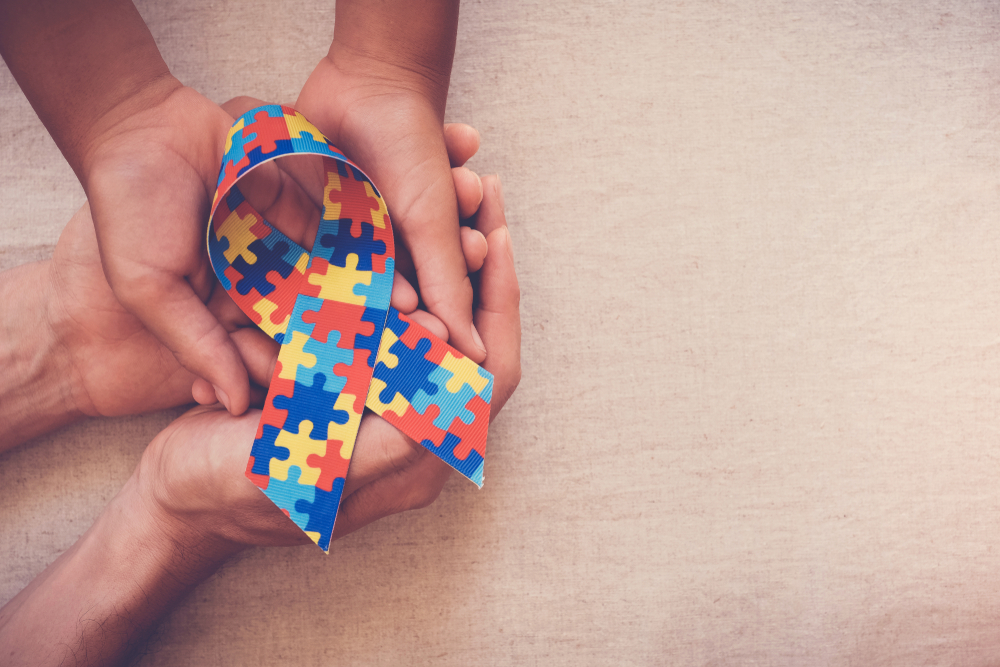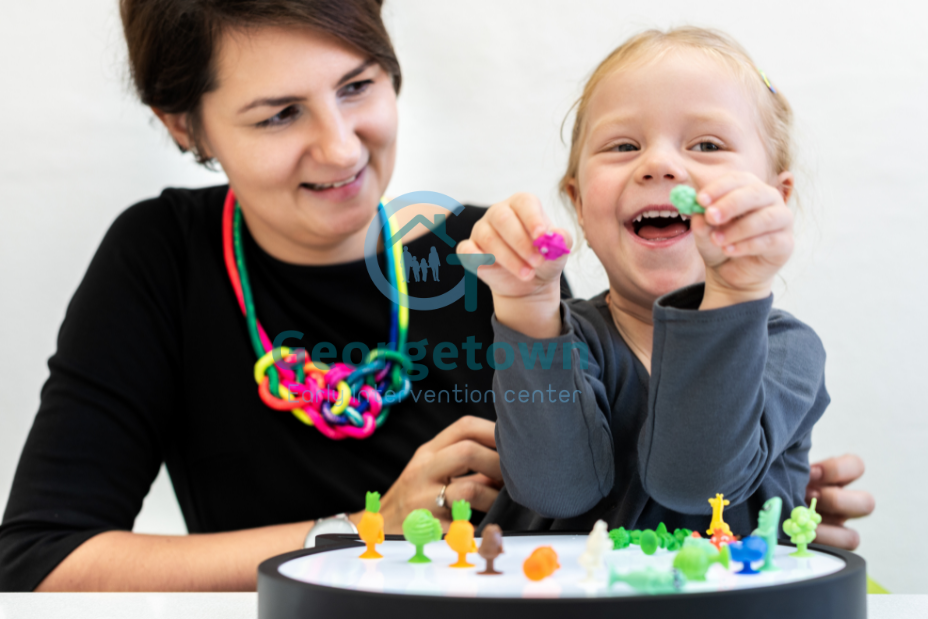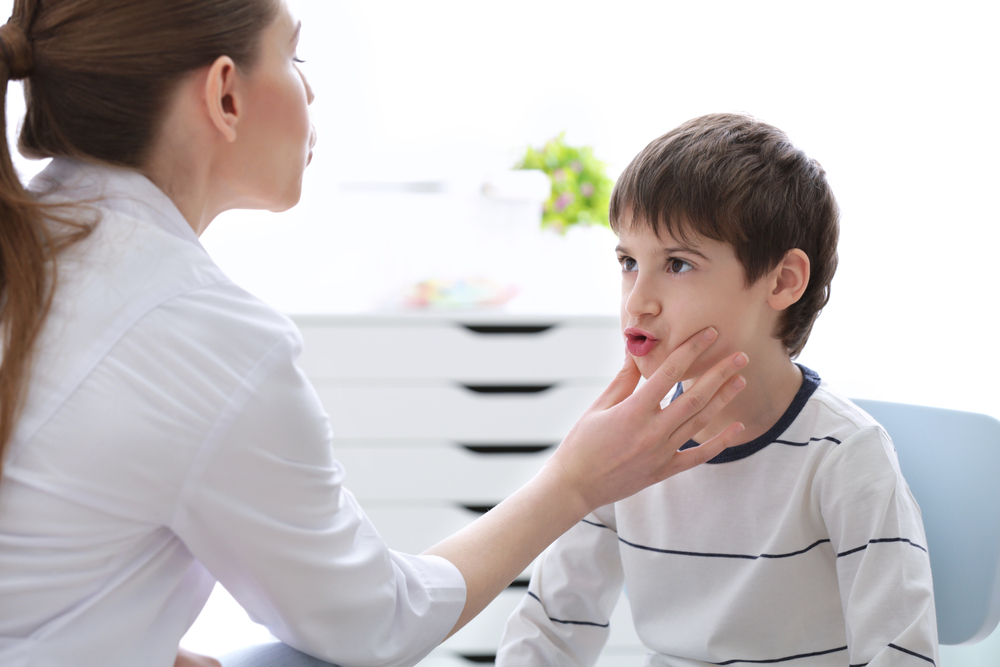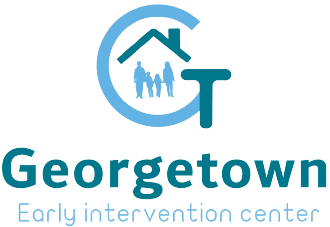A child behavioral therapist is more than just a professional; they're a supportive coach for your child and your entire family. Their role is to help everyone navigate the often-tricky waters of emotional and behavioral challenges. They focus on getting to the heart of a child's actions, working together with you to build positive coping skills, open up lines of communication, and foster real emotional resilience.
What Does a Child Behavioral Therapist Actually Do?
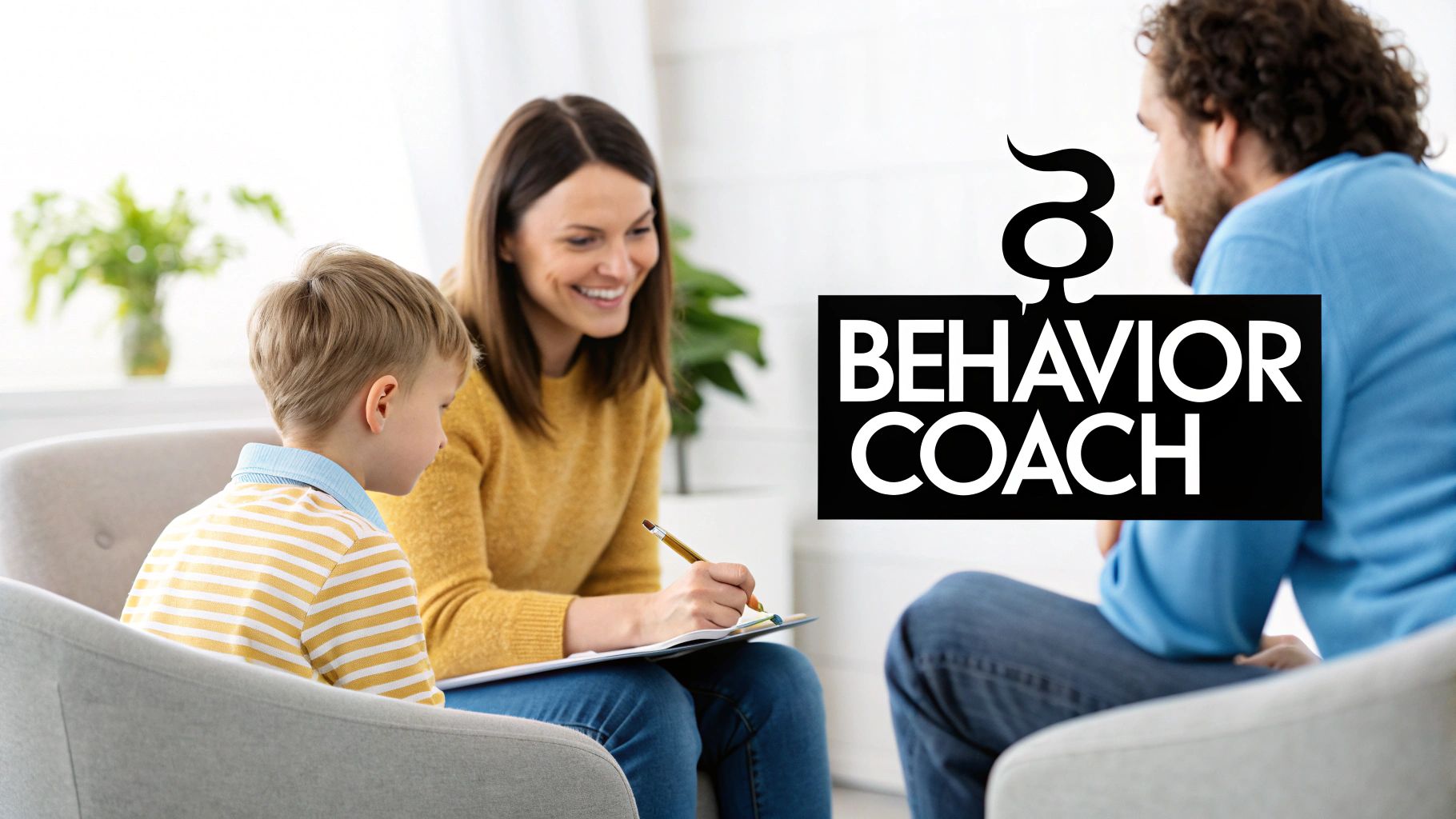
It’s helpful to think of a child behavioral therapist not as a clinical figure who just "fixes" problems, but as a skilled guide and a true partner in your child's development. Their most important job is creating a safe, encouraging space where your child feels comfortable enough to learn and grow. These are experts in child development who understand a fundamental truth: behavior is communication.
So instead of only addressing surface-level actions like tantrums or social withdrawal, they dig deeper. They ask the important questions to uncover the root cause. Is the child feeling overwhelmed? Misunderstood? Are they struggling to express a need? By identifying these core issues, the therapist can create a truly personalized plan that makes sense for your child.
A Collaborative Approach to Growth
One of the most powerful aspects of this therapy is the close partnership with the family. After all, a child doesn’t exist in a vacuum. Lasting, meaningful change happens when parents and caregivers are brought into the process and empowered with the right tools and understanding. The therapist becomes a key part of your support system, offering practical guidance to create a home environment that reinforces positive behaviors.
This partnership is built around a few key goals:
- Building Emotional Resilience: This means helping kids learn how to handle big feelings—like anger, frustration, and anxiety—in healthy, constructive ways.
- Improving Communication: The therapist teaches children how to effectively express their wants and needs, which cuts down on the frustration that often fuels challenging behaviors.
- Developing Coping Strategies: This involves equipping children with a toolkit of practical strategies for dealing with stress, tricky social situations, and academic pressures.
- Strengthening Family Dynamics: The whole family benefits from strategies designed to improve parent-child interactions and create a more harmonious, supportive home life.
A core focus for child behavioral therapists is often to enhance a child's emotional intelligence, guiding them through various emotional intelligence activities for kids that build lifelong skills like self-awareness and empathy.
Ultimately, the goal is to foster skills that will serve your child far beyond the therapy room. While these therapists are specialists, they are also part of a wider network of professionals. Understanding the role of a clinical psychologist can also offer insight into how different experts support a child's complete well-being. A child behavioral therapist provides a proactive, supportive path toward a happier, more confident future for your child.
Recognizing When Your Child Might Need Support
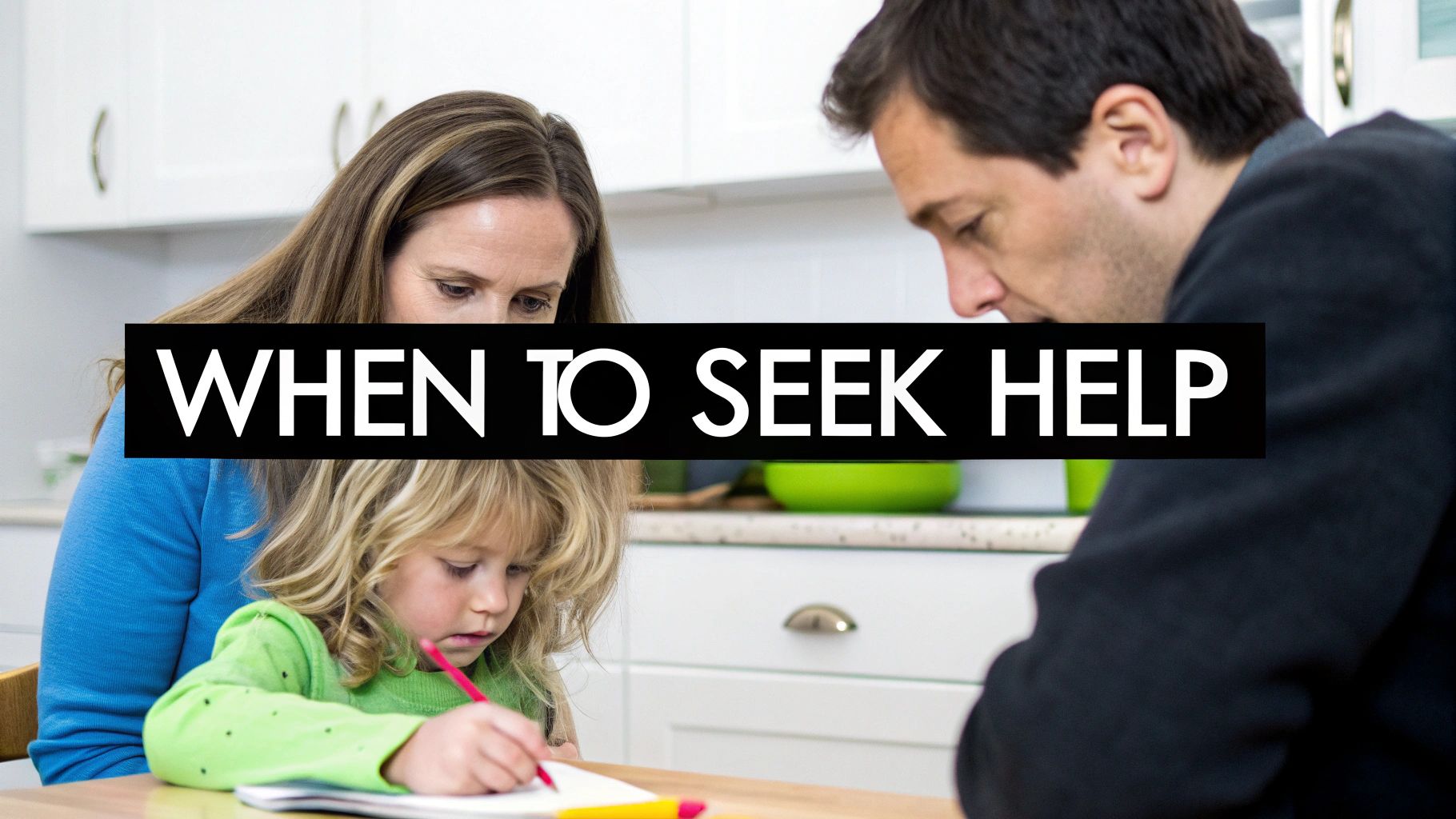
As a parent, you have a front-row seat to your child's world. You know their quirks, their joys, and you can tell when something just isn't right. Still, figuring out the difference between a normal developmental bump in the road and a sign that professional support is needed can be tough.
Every child has their bad days or tricky phases. But when those difficult patterns start to become the new normal, it might be time to think about speaking with a child behavioral therapist. This isn't about putting a label on your child; it's about giving them the tools they need to navigate their feelings and the world around them.
Catching these signs early means you can be proactive. It’s an opportunity to help your child build resilience and coping skills that will benefit them for the rest of their lives.
Emotional and Social Warning Signs
One of the clearest signals that a child could use some extra support is persistent emotional struggles. While mood swings are a classic part of growing up, some patterns are worth a closer look.
The key is to watch for behaviors that consistently get in the way of daily life, disrupt family harmony, or cause problems at school. For instance, overwhelming sadness that doesn't lift, anger that feels way out of proportion to the trigger, or constant worrying can point to deeper issues.
Here are a few specific emotional and social signals to be aware of:
- Intense Emotional Outbursts: Frequent meltdowns, aggression, or tantrums that are much more severe than what's typical for their age.
- Social Withdrawal: A noticeable change in their interest in being with friends or family, choosing to be alone instead of doing things they used to love.
- Overwhelming Anxiety: Constant fears, worrying about the future, or even physical symptoms like stomach aches that have no medical cause.
- Sudden Changes in Behaviour: Big shifts in their sleeping or eating patterns, or suddenly losing interest in their favorite hobbies.
It's also incredibly important for parents to recognize complex family dynamics. For example, understanding the signs of parental alienation can be critical, as these situations can deeply impact a child’s emotional well-being and their relationships.
Academic and Behavioural Challenges
Sometimes, the first signs of trouble show up at school. A sudden drop in grades, difficulty concentrating, or getting into frequent trouble are often symptoms of an underlying problem, not the problem itself. A child who is constantly acting out in class might be trying to communicate frustration or anxiety they don't know how to put into words.
Similarly, persistent defiance at home or a flat-out refusal to follow rules can be more than "just a phase." When these behaviors create constant conflict and strain family relationships, a therapist can help uncover what's really going on. Looking into different ways for how to solve children behaviour problems can give parents practical, effective strategies.
Making the decision to seek help from a child behavioral therapist is a sign of your strength and love as a parent. It shows you're committed to giving your child the best possible support so they can thrive—emotionally, socially, and in school.
Understanding Different Child Therapy Approaches
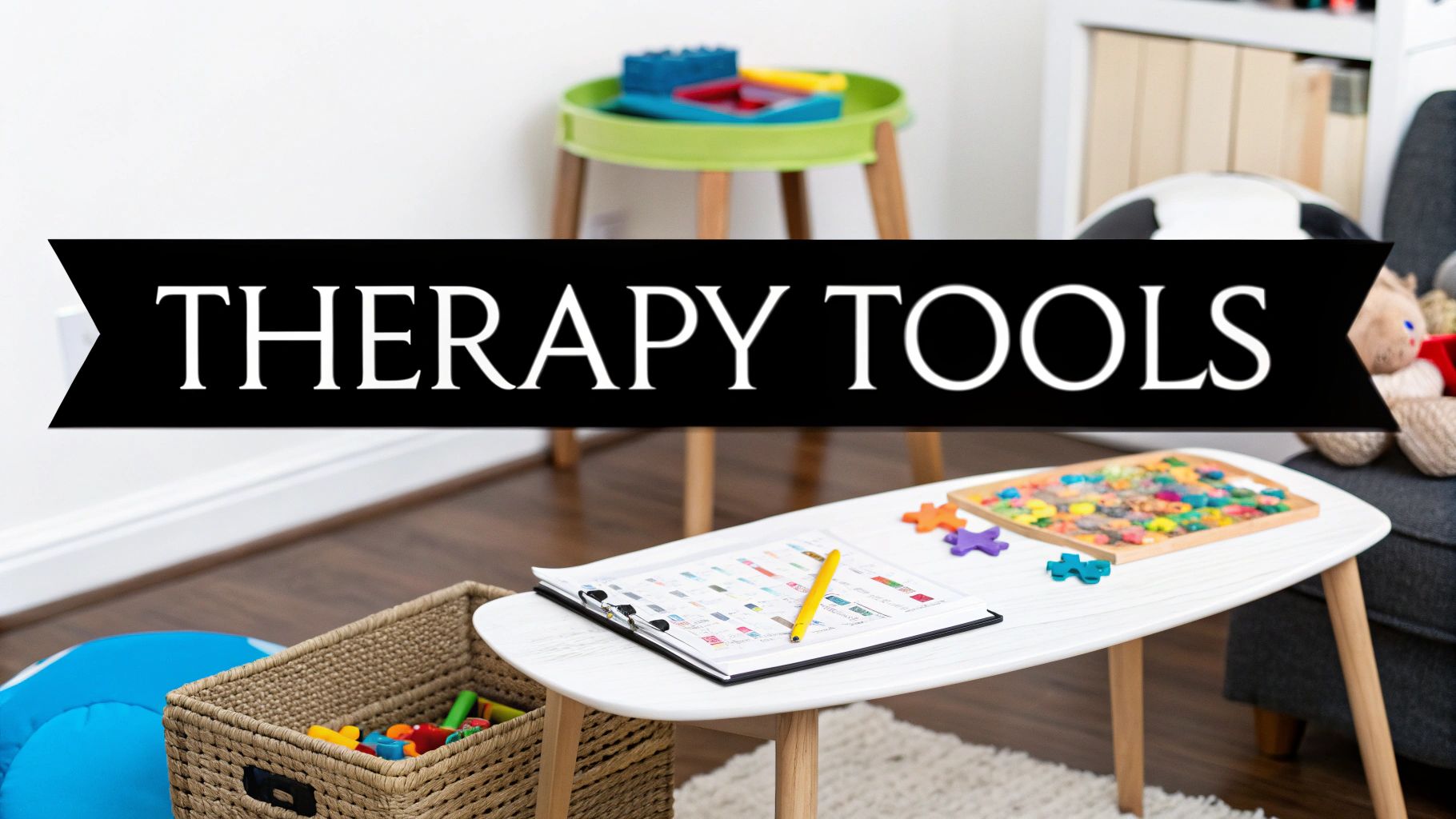
When you first hear the word "therapy," it's easy to picture a single, straightforward process. But a skilled child behavioral therapist actually works with a whole toolkit of specialized methods. Think of it like a tailor choosing the perfect fabric—the right approach has to be carefully matched to a child's unique personality, age, and the specific challenges they're facing.
There’s no magic bullet or single "best" therapy. Instead, these professionals draw from several proven, evidence-based practices to build a personalized plan that will truly connect with your child. Let’s walk through three of the most common and effective approaches used today.
Cognitive Behavioral Therapy (CBT)
You can think of Cognitive Behavioral Therapy (CBT) as a kind of 'thought detective' work for kids. It’s built on a simple but incredibly powerful idea: our thoughts, feelings, and actions are all connected. For example, a child might think, "No one at school likes me" (that’s the thought). This makes them feel sad and lonely (the feeling), which then leads them to avoid playing with others at recess (the action).
A therapist using CBT helps a child spot these unhelpful thought patterns. Together, they investigate the "evidence" for those thoughts, challenge them, and work on replacing them with more balanced and realistic ones. This process arms the child with practical, real-world skills to manage anxiety, reframe negative thinking, and build lasting confidence.
The effectiveness of this method is driving major investment in mental health services. In fact, children are projected to make up about one-third of the global CBT market revenue share by 2025, and the UAE is actively training more therapists in this practice for schools and clinics.
Play Therapy
For younger children, finding the right words to express big, complicated emotions can be almost impossible. This is where Play Therapy shines. It works on a simple premise: play is a child’s natural language, and toys are their words.
In a Play Therapy session, the playroom becomes a safe and controlled space. Here, a child can freely express their feelings, fears, and experiences through activities like drawing, telling stories with puppets, or building with blocks. A trained therapist observes, participates, and gently guides the play to help the child process difficult emotions and develop healthier ways to cope.
Applied Behaviour Analysis (ABA)
Applied Behaviour Analysis (ABA) is a highly structured, goal-oriented approach often used to help children build specific skills. It is incredibly effective for teaching positive behaviors—everything from improving social interactions and communication to mastering daily living skills like brushing their teeth or getting dressed.
ABA works by breaking down complex skills into small, manageable steps. As the child masters each tiny step, the therapist uses positive reinforcement—like praise, a high-five, or a small reward—to encourage them. This systematic process builds momentum and helps make learning feel successful and motivating.
While ABA is widely known for its incredible benefits for children with autism, its core principles can be adapted to help with a wide variety of behavioral goals. If you want to dive deeper, our guide to understanding ABA therapy offers a much more detailed look at this approach.
Ultimately, a great child behavioral therapist will often blend elements from these different approaches. They’ll create a truly individualized plan that helps your child feel understood, supported, and ready for success.
Here's the rewritten section, crafted to sound natural and human-written, following the provided style and instructions.
The Growing Acceptance of Child Therapy in the UAE
Across the UAE, the conversation around children's mental and emotional health is finally changing for the better. What was once a topic kept behind closed doors is now stepping into the light, thanks to a cultural shift that prioritizes well-being right from the start.
This positive change is creating a new normal. Now, seeking support from a child behavioral therapist isn’t seen as a last resort, but as a proactive, empowering choice for parents who want the best for their kids. This evolution isn't happening by chance; it’s the result of a deliberate movement to destigmatize mental health. Families are realizing that a child’s emotional wellness is just as vital as their physical health.
A Proactive Approach to Wellbeing
The UAE has been impressively forward-thinking in building a strong mental health foundation for its youngest residents. Psychological services are now being integrated directly into schools and clinics, making support more visible and accessible than ever before. This helps catch challenges early, giving children the help they need right where they are most comfortable.
This growing demand is reflected in the numbers. In the UAE and the wider MENA region, the market for child psychological counseling is expected to jump from around USD 100 million in 2024 to an estimated USD 300 million by 2033. This growth is driven by a greater understanding of issues like childhood anxiety and behavioral disorders. You can learn more about these market trends and the future of child psychological services.
Making Care More Accessible
Technology has also been a huge factor in this positive shift. The rise of teletherapy has been a game-changer, breaking down geographical barriers and offering families a flexible way to get specialized care.
For a busy family, being able to connect with a qualified child behavioral therapist from their own home can make all the difference. It ensures consistency and convenience, which are key to making real progress.
This mix of government support, growing cultural acceptance, and new technology is creating a truly supportive ecosystem for families. It sends a clear message to parents in the UAE: you're not alone, and getting professional guidance for your child's well-being is a celebrated step toward a brighter future.
What to Expect From Your Child's Therapy Journey
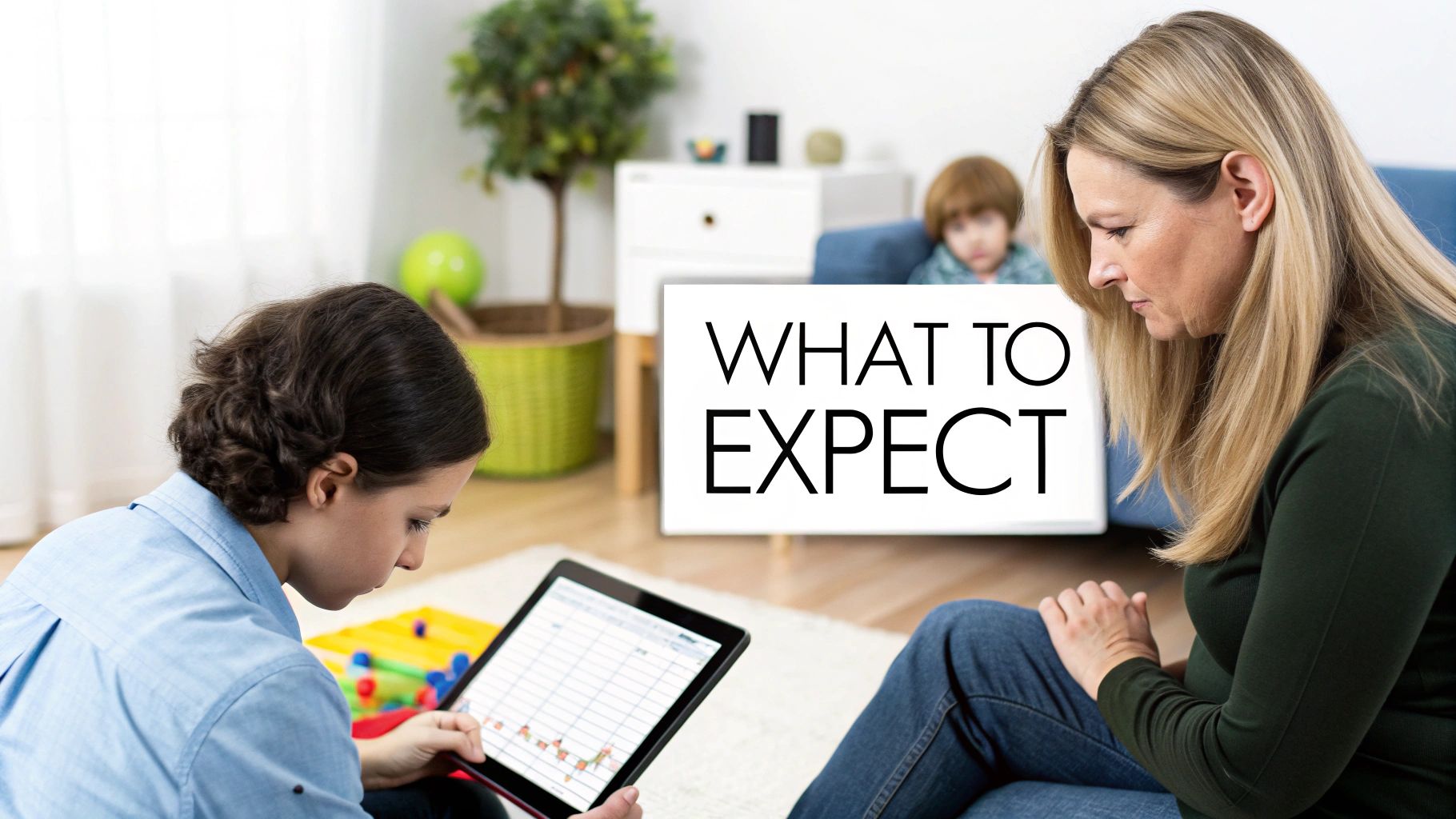
Starting therapy can feel like stepping into a big unknown. I get it. But the process is far more structured and collaborative than most parents realize. A great child behavioral therapist doesn't just wing it; they create a clear roadmap and guide your family through each step with transparency and care.
Knowing what that roadmap looks like can make all the difference. It helps ease those first-time jitters and gets everyone—you and your child included—ready for the positive journey ahead.
From the very first conversation, this is a partnership. You are the expert on your child, and your insights into their personality, strengths, and struggles are invaluable. This teamwork ensures the therapy plan isn't just a generic template, but a perfect fit for your family.
The First Steps: Consultation and Assessment
Your journey kicks off with an initial consultation. Think of this first meeting as a two-way conversation. It’s your chance to get a feel for the therapist and their approach, just as much as it's their chance to learn about your child and your concerns. You'll talk through your child's developmental history and what you're hoping to achieve.
After that comes a more formal assessment. This isn't a test with right or wrong answers, so you can breathe a sigh of relief. It's simply the therapist’s way of getting a complete picture of your child's world. This phase might involve a few different things:
- Direct Observation: The therapist may watch your child play or interact with you. This gives them a window into your child's communication style and behaviors in a natural, comfortable setting.
- Parent and Teacher Questionnaires: These are structured forms that help gather consistent feedback on how your child is doing in different environments, like at home versus at school.
- One-on-One Activities: The therapist might guide your child through some specific, age-appropriate activities to see their social skills, emotional regulation, and problem-solving abilities in action.
The whole point of this phase is discovery. A good therapist is like a detective, gathering all the clues to understand the root of the challenges, not just the behaviors you see on the surface. This deep dive is what allows them to build a truly meaningful and effective plan.
Working Together: Goal-Setting and Therapy Sessions
Once the assessment is done, you'll sit down with the therapist to set clear, achievable goals together. This is a crucial step. Instead of a vague goal like "improve behavior," you'll work on something concrete and measurable. For example, a target might be "using words to express frustration instead of hitting" or "participating in a group activity for ten minutes without leaving."
So, what does a typical therapy session actually look like? It’s active, engaging, and often feels a lot like play. Depending on the therapy approach, you might see structured games, role-playing social scenarios, or learning new coping skills through fun, creative activities.
Your involvement doesn't stop after the assessment, either. You’ll get regular updates and practical tips on how to reinforce new skills at home. This turns you into an active part of your child’s progress, making the journey a true partnership from start to finish.
How to Choose the Right Therapist for Your Family
Finding the right professional is easily one of the most critical steps in this process. The connection between your child, your family, and the therapist really is the bedrock of success. It’s less about just finding someone with the right qualifications on paper and more about finding a genuine partner for your family's journey.
Start with the essentials: credentials and specialization. A qualified child behavioral therapist in the UAE should have the necessary degrees and licenses to practice. But don't stop there. You’ll want to find someone with specific, hands-on experience related to your child’s unique needs. For instance, if anxiety is the main challenge, it makes sense to look for a therapist who truly specializes in that area.
Key Areas to Investigate
Finding the perfect fit is a blend of practical due diligence and trusting your gut during that first meeting. Never feel hesitant to ask direct questions—a good therapist will not only expect them but welcome them, being open and honest about how they work.
Before you make any commitments, it’s a good idea to get clear on a few key points to make sure you're all on the same page. This is how you build confidence in your choice.
Here are a few critical questions to get you started:
- Experience: "Could you tell me about your experience working with children facing similar challenges to my child's?"
- Approach: "What therapy methods do you typically use, and why do you think they would be a good fit for my child?"
- Parental Role: "How do you involve parents in the therapy process? What would you expect my role to be?"
- Progress: "How will we track progress, and how often can we expect to connect to talk about how things are going?"
That initial consultation is your moment to get a feel for the therapist’s communication style and overall vibe. The goal is to find someone who not only connects with your child but also makes you feel supported, heard, and empowered as a parent.
Ultimately, choosing a therapist is a deeply personal decision. Give yourself the time to do the research, ask all your questions, and listen to your intuition. When you find that ideal match, it sets the stage for a positive and effective experience, giving your child the best possible support to thrive.
Your Questions About Child Therapy, Answered
Stepping into the world of child therapy can bring up a lot of questions. It’s completely normal to want clarity before you begin. Here, we’ve answered some of the most common queries we hear from parents, giving you the straightforward information you need to feel confident about taking the next step.
How Long Does Child Therapy Typically Last?
This is one of the first questions parents ask, and the honest answer is: it depends entirely on your child. Every child's journey is unique. For some, a few months of focused sessions might be all it takes to work through a specific behavioral hurdle.
For children with more complex or long-standing challenges, therapy might be a more consistent part of their support system. A great child behavioral therapist will map out a projected timeline with you right after the initial assessment, so you have a clear picture from the very beginning.
Will I Be Involved in My Child's Therapy Sessions?
Absolutely—and your involvement is one of the most powerful predictors of success. While your child will have dedicated one-on-one time with their therapist to build trust and work on specific skills, you are a vital part of the team.
Think of it as a partnership. You'll have regular check-ins with the therapist to celebrate your child's progress and, just as importantly, learn strategies you can use at home. This collaborative approach is what helps the skills learned in therapy stick, weaving them into the fabric of your family’s daily life for lasting, meaningful change.
How Much Does Child Behavioural Therapy Cost?
The cost of therapy can vary based on a few factors, like the therapist's level of experience, the clinic's location, and how long each session is. It’s important to know that many health insurance plans in the UAE now provide coverage for mental and behavioral health services.
Your best first step is always to call your insurance provider directly. They can walk you through your specific plan, explaining your benefits and what coverage options are available for your child.





